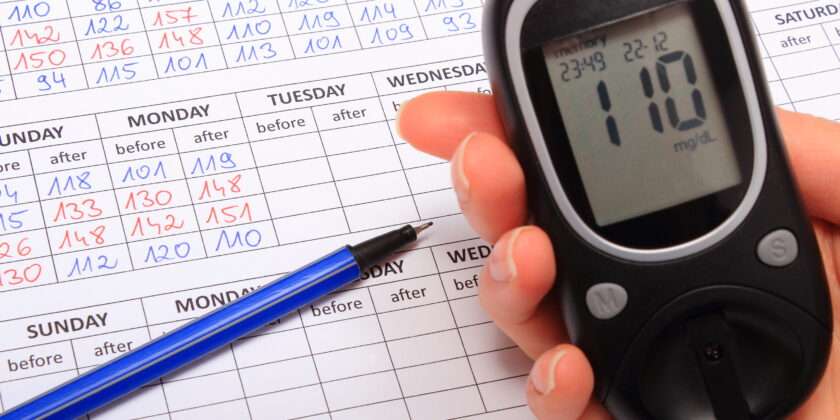African Americans are almost twice as likely to be diagnosed with diabetes as non-Hispanic whites1 . In addition, they are more likely to suffer complications from diabetes, such as end-stage renal disease and lower extremity amputations. Although African Americans have the same or lower rate of high cholesterol as their non-Hispanic white counterparts, they are more likely to have high blood pressure. Here are more facts about African Americans and diabetes from the Office of Minority Health (OMH):
- African American adults are 80 percent more likely than non-Hispanic white adults to have been diagnosed with diabetes by a physician.
- In 2010, non-Hispanic blacks were 4.2 times more likely to be diagnosed with end-stage renal disease as compared to non-Hispanic whites.
- In 2012, non-Hispanic blacks were 3.5 times more likely to be hospitalized for lower limb amputations as compared to non-Hispanic whites.
- In 2013, African Americans were twice as likely as non-Hispanic Whites to die from diabetes.
Many patients have questions about diabetes. There are many good sources of information about diabetes from Diabetes Educators2 , the American Diabetes Association3 and the Centers for Disease Control and Prevention4 (CDC). One question that’s consistently asked by patients is “What’s the difference between insulins?” Knowing how long your insulin is expected to last is of critical importance.
Jay Harold used information from the Food and Drug Administration5 (FDA) to provide answers to how long do different insulins last. First some basic information about diabetes.
3 Types of Diabetic Patients
Type 1 Diabetes
People with type 1 diabetes make very little or no insulin in their bodies. They must take insulin every day to stay alive.
Type 2 Diabetes
People with type 2 diabetes do not make enough insulin or do not use it well enough. Some individuals with type 2 diabetes can use pills or other medicines that are injected into the body. Other people with type 2 also need insulin to help control their diabetes.
Gestational Diabetes
Some women develop diabetes for the first time when they become pregnant. This is called gestational (jes-Tay-shun-ul) diabetes. Some women with gestational diabetes need to use insulin to control their blood sugar.
How often should I inject my insulin?
Each person is different. Some people need to inject insulin one time each day. Others need to inject insulin more often. Many things affect how much insulin you need each day:
- Type of Insulin You Use
- What You Eat
- Your Activity Level
- Your Other Health Conditions
Your doctor will tell you how often you should inject your insulin.
5 DifferentTypes of Insulin
There are many different types of insulin. The type lets you know how fast the insulin starts working or how long it lasts in your body. Your health care provider will help you find the insulin that is best for you.
- Rapid-Acting – This insulin starts working within 15 minutes after you use it. It is mostly gone out of your body after a few hours. It should be taken just before or just after you eat.
- Short-Acting – This insulin starts working within 30 minutes to 1 hour after you use it. It is mostly gone out of your body after a few hours. It should be taken 30-45 minutes before you eat.
- Intermediate-Acting – This insulin starts working within 2-4 hours after you use it. It reaches its highest level in your blood around 6-8 hours after you use it. It is often used to help control your blood sugar between meals. Some people use this type of insulin in the morning, at bedtime, or both.
- Long-Acting – This insulin starts working within 2 to 4 hours after you use it. It can last in the body for up to 24 hours. It is often used in the morning or at bedtime to help control your blood sugar throughout the day.
- Pre-Mixed – This is a mix of two different types of insulin. It includes one type that helps to control your blood sugar at meals and another type that helps between meals.
5 Different Types of Insulin: Chart with Brand Names
| Brand Name | Other Names | Type of Insulin (How Fast Insulin Works) |
|---|---|---|
| Afrezza (inhalation powder) | Insulin Human | Rapid Acting |
| Apidra Apidra Solostar |
Insulin Glulisine | Rapid Acting |
| Humalog Humalog Pen Humalog Kwikpen |
Insulin Lispro | Rapid Acting |
| Novolog | Insulin Aspart | Rapid Acting |
| Humulin R Humulin R Pen |
Regular Human Insulin | Short Acting |
| Novolin R | Regular Human Insulin | Short Acting |
| Humulin N | NPH Human Insulin (Human Insulin Isophane Suspension) |
Intermediate Acting |
| Novolin N | NPH Human Insulin (Human Insulin Isophane Suspension) |
Intermediate Acting |
| Lantus | Insulin Glargine | Long Acting |
| Levemir | Insulin Detemir | Long Acting |
| Toujeo | Insulin Glargine | Long Acting |
| Tresiba | Insulin Analog | Long Acting |
| Humalog Mix 75/25 Humalog Mix 75/25 Pen |
75% Insulin Lispro Protamine Suspension 25% Insulin Lispro Injection |
Intermediate and Rapid Acting |
| Humalog Mix 50/50 Humalog Mix 50/50 Pen |
50% Insulin Lispro Protamine Suspension 50% Insulin Lispro Injection |
Intermediate and Rapid Acting |
| Humulin 70/30 Humulin 70/30 Pen |
70% NPH Human Insulin 30% Regular Human Insulin Injection |
Intermediate and Short Acting |
| NovoLog Mix 70/30 NovoLog Mix 70/30 FlexPen |
70% Insulin Aspart Protamine Suspension 30% Insulin Aspart Injection |
Intermediate and Rapid Acting |
| Novolin 70/30 | 70% NPH Human Insulin 30% Regular Human Insulin Injection |
Intermediate and Short Acting |
|
Ryzodeg 70/30
|
70% Insulin Degludec
30% Insulin Aspart
|
Long and Rapid Acting |
Patient Advice: Do not store your insulin in a place that is very hot or very cold.
Insulin Side Effects
Insulin affects each person differently. Insulin can sometimes cause side effects. The side effects will depend on your body and the type of insulin you are taking. Follow these tips to help you learn how to handle side effects.
- Get the facts. Ask your health care provider about the side effects, warnings, and other facts for your insulin. This booklet does not give all facts for each kind of insulin.
- Speak up. Tell someone about any problems you may be having with your insulin. Your doctor may change your prescription or give you tips to help you deal with the side effects.
- Check the FDA website. You can find up-to-date safety information about your insulin at www.fda.gov
- Report serious problems with your insulin or device. You or your doctor can tell the FDA about serious problems with your medicines.Call FDA at 1-800-332-1088 to report serious side effects.Learn more about reporting problems to the FDA at www.fda.gov/Safety/MedWatch/HowToReport/ucm053074.htm
Tip from FDA: Talk to your doctor before you change or stop taking your insulin.
Approximately 50% of patients do not take their medications6 as prescribed. Insulin is one of the medications where compliance is a matter of life or death. Jay Harold firmly believes that an informed patient will take their medications as directed.
Click this link to get free Health and Wealth information to improve your life. Play the free “Slow Roll Through Civil Rights” Game found on the Jay Harold website. Enjoyed this post? Share it and read more here. Questions? “Ask the Pharmacist a Question!”





